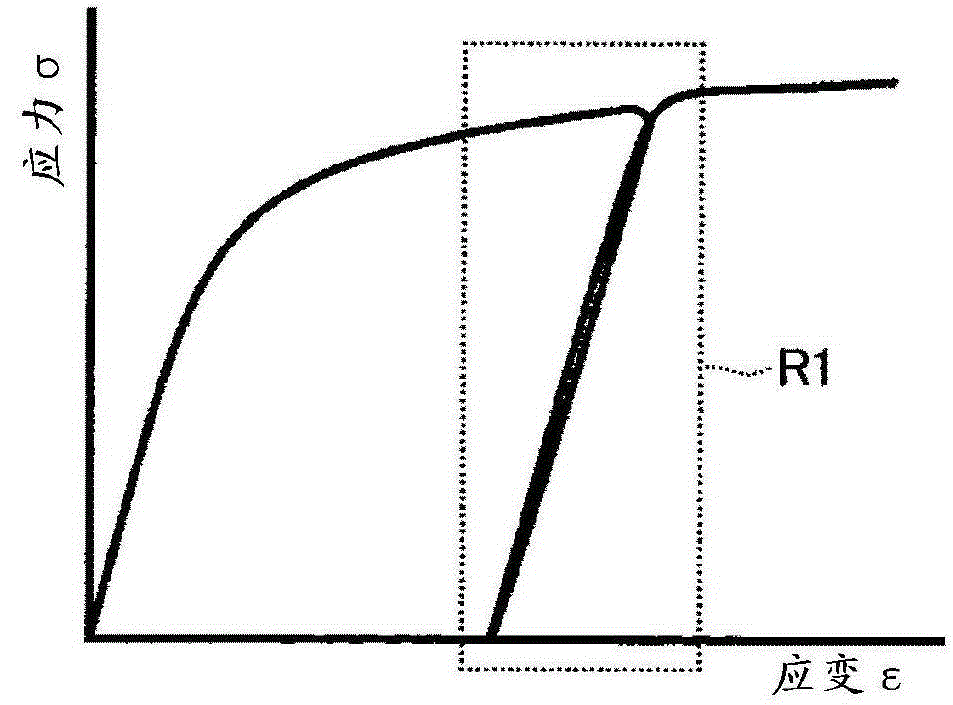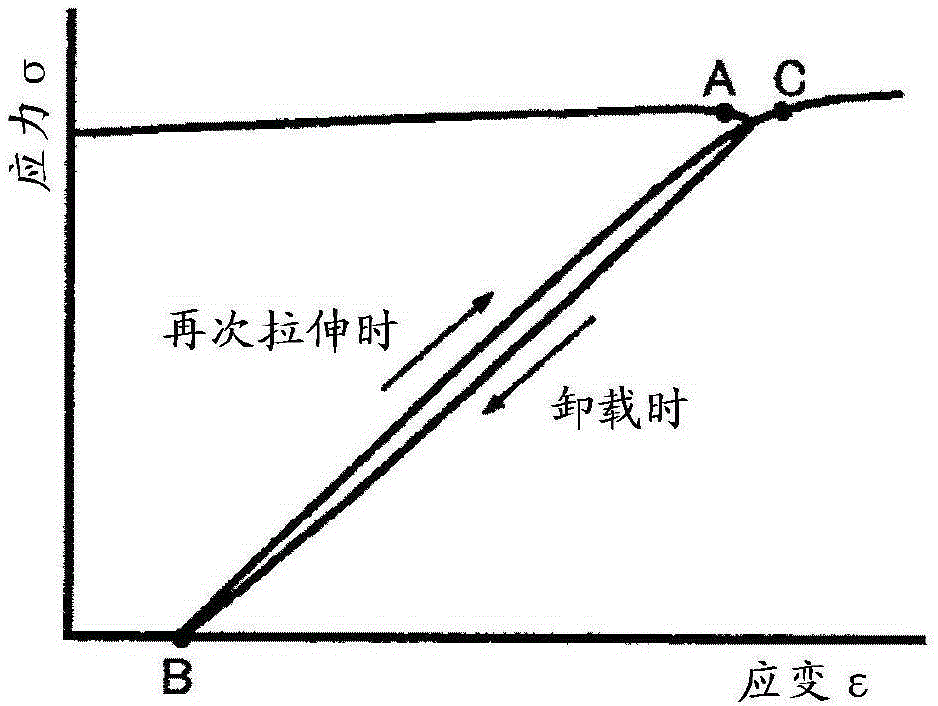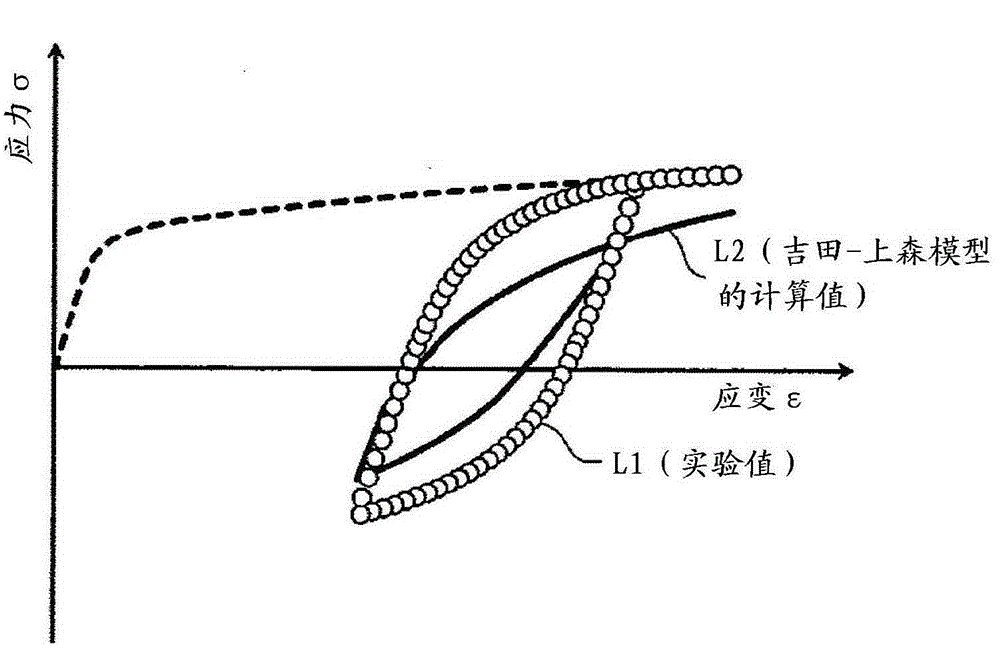Stress-strain relationship simulation method, spring back prediction method, and spring back analyzing device
A technology of strain relationship and simulation method, applied in the direction of measuring device, using stable tension/pressure to test the strength of materials, analyzing materials, etc. Different gradients, etc.
- Summary
- Abstract
- Description
- Claims
- Application Information
AI Technical Summary
Problems solved by technology
Method used
Image
Examples
Embodiment approach 1
[0144] 〔Stress-strain relationship simulation method〕
[0145] Next, refer to Figure 7 A stress-strain relationship simulation method according to one embodiment of the present invention will be described. Figure 7 It is a flowchart showing the flow of the stress-strain relationship simulation method according to the first embodiment. In the process of step S1, the operator acquires experimental values of the stress-strain relationship of the elastoplastic material. In order to obtain the experimental value, the operator conducts the following test: unloading the elastoplastic material after applying stress in the tensile direction to plastically deform it, and applying stress in the compressive direction to plastically deform it (tension→unloading→compression). In addition, the operator conducted a test of unloading after applying stress in the tensile direction to plastically deform it, and applying stress in the tensile direction again to plastically deform it (stretc...
Embodiment approach 2
[0152] 〔Prediction method of springback amount〕
[0153] Next, refer to Figure 8 A rebound amount prediction method according to one embodiment of the present invention will be described. Figure 8 It is a flowchart showing the flow of the rebound amount prediction method of this embodiment. The processing of steps S1 to S4 is the same as Figure 7 are the same, so their description is omitted. In the processing of step S6, if the material constants determined by the processing of steps S2 to S4 are substituted into the elastoplastic constitutive equations (1) (2), the computer uses the elastoplastic constitutive equations substituted into the material constants to execute the return Spring analysis, predict the amount of springback.
Embodiment approach 3
[0155] By including the dynamic hardening increment vector dα created in Embodiment 1 ij The elastoplastic constitutive equation is loaded into the finite element method (finiteelementmethod) analysis software to form a springback analysis device. Below, based on Figure 9 The shown block diagram illustrates the structure of such a springback analysis device 1 .
[0156] [Rebound analysis device]
[0157] Such as Figure 9As shown, the rebound analysis device 1 is composed of a PC (personal computer), etc., and has a display device (display device) 3, an input device (input device) 5, a main storage device (memory storage) 7, an auxiliary storage device 9, and arithmetic processing (arithmetic processing). ) Section 11. A display device 3 , an input device 5 , a main storage device 7 , and an auxiliary storage device 9 are connected to the arithmetic processing unit 11 , and each function is executed in accordance with an instruction from the arithmetic processing unit 11 ...
PUM
 Login to View More
Login to View More Abstract
Description
Claims
Application Information
 Login to View More
Login to View More - R&D
- Intellectual Property
- Life Sciences
- Materials
- Tech Scout
- Unparalleled Data Quality
- Higher Quality Content
- 60% Fewer Hallucinations
Browse by: Latest US Patents, China's latest patents, Technical Efficacy Thesaurus, Application Domain, Technology Topic, Popular Technical Reports.
© 2025 PatSnap. All rights reserved.Legal|Privacy policy|Modern Slavery Act Transparency Statement|Sitemap|About US| Contact US: help@patsnap.com



